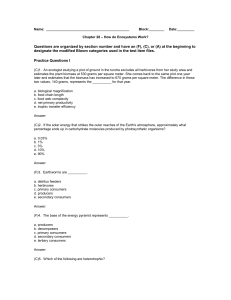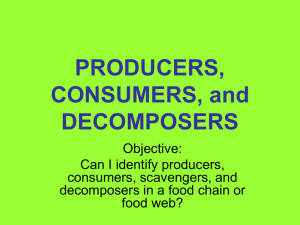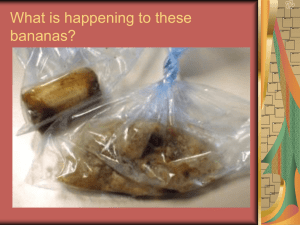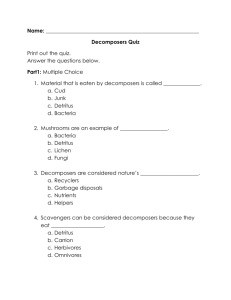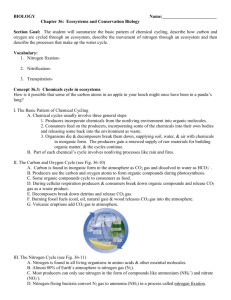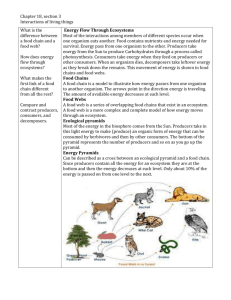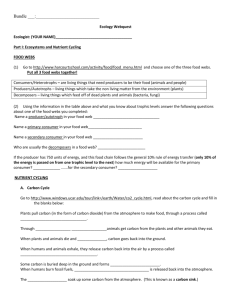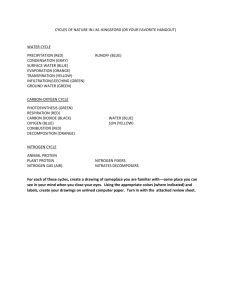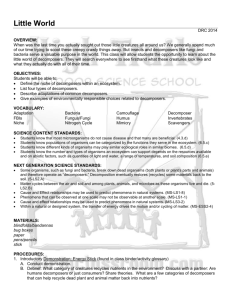6.9
advertisement
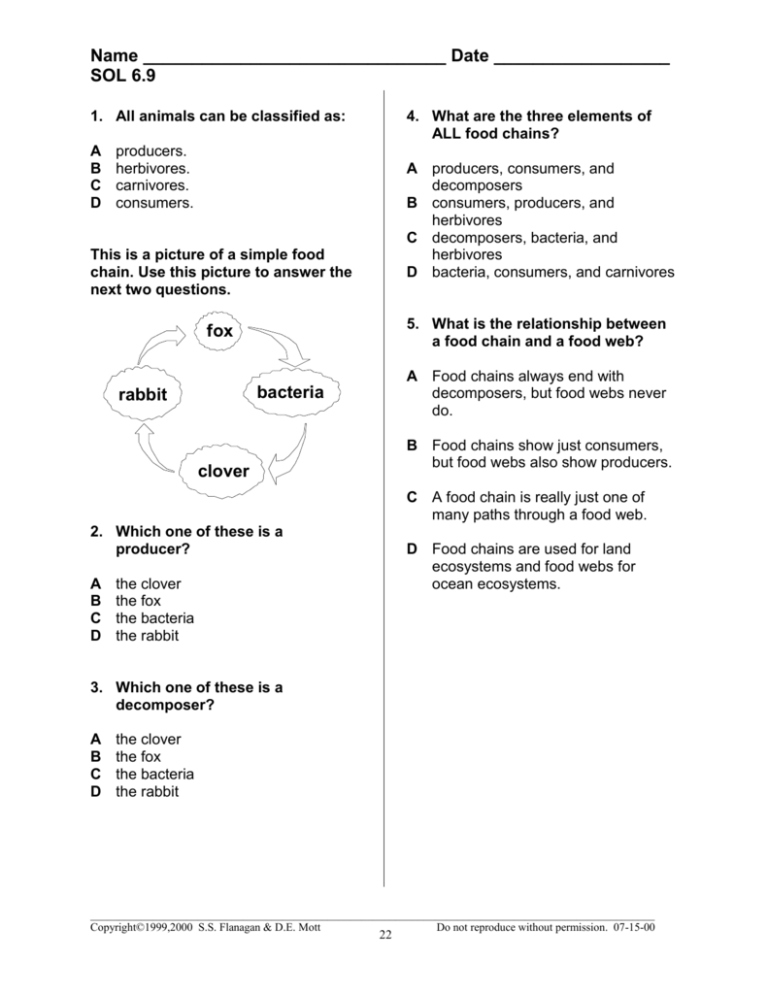
Name _______________________________ Date __________________ SOL 6.9 1. All animals can be classified as: A B C D 4. What are the three elements of ALL food chains? producers. herbivores. carnivores. consumers. A producers, consumers, and decomposers B consumers, producers, and herbivores C decomposers, bacteria, and herbivores D bacteria, consumers, and carnivores This is a picture of a simple food chain. Use this picture to answer the next two questions. 5. What is the relationship between a food chain and a food web? fox A Food chains always end with decomposers, but food webs never do. bacteria rabbit B Food chains show just consumers, but food webs also show producers. clover C A food chain is really just one of many paths through a food web. 2. Which one of these is a producer? A B C D D Food chains are used for land ecosystems and food webs for ocean ecosystems. the clover the fox the bacteria the rabbit 3. Which one of these is a decomposer? A B C D the clover the fox the bacteria the rabbit ____________________________________________________________________________________________________ Copyright©1999,2000 S.S. Flanagan & D.E. Mott Do not reproduce without permission. 07-15-00 22 Name _______________________________ Date __________________ SOL 6.9 6. The carbon-dioxide/oxygen cycle consists of what processes? 9. Certain bacteria in some plant roots put nitrogen compounds into the soil. Why is this important? A Plants take in carbon dioxide and release oxygen; animals take in oxygen and release carbon dioxide. A Some animals use nitrogen from the soil. B Nitrogen is part of the water and oxygen cycles. C Plants need nitrogen compounds to grow. D Other bacteria need to use the nitrogen. B Plants take in oxygen and release carbon dioxide; animals take in carbon dioxide and release oxygen. C Plants take in carbon dioxide and release water; animals take in oxygen and release water. D Plants take in oxygen and release water; animals take in carbon dioxide and release water. 10. A decomposer is an organism that gets energy from dead organisms. A decomposer is considered to be: A B C D 7. Nitrogen goes through many changes as a part of different compounds in the air, in the soil, and in plants and animals. What is this series of changes called? A B C D 11. What is a living thing that eats other organisms called? the fixation process the nitrogen cycle the reduction process the releasing mechanism A B C D 8. The water cycle is a name for the continuous movement of water in: A B C D a producer. a consumer. a herbivore. a photosynthesizer. a consumer a producer a decomposer an eater 12. Within a food web, which level stores the most energy? the ocean. an ecosystem. the atmosphere. a pond. A B C D the producers the consumers omnivores the decomposers ____________________________________________________________________________________________________ Copyright©1999,2000 S.S. Flanagan & D.E. Mott Do not reproduce without permission. 07-15-00 23 Name _______________________________ Date __________________ SOL 6.9 13. As one moves throughout a food chain, energy: Use the food web below to answer the next two questions. A is conserved and each organism receives more than the first. Owl Fox Frog B is lost between the levels along the food web resulting in the decomposers receiving the least total amount of energy, while the producers get the most. Grasshopper Bird Rabbit Grasses, Trees, and Bushes C decreases because of some of the animals hibernating. D increases because it is conserved. 14. How does energy flow in this food web? A B C D from the top from the bottom across only It can move in any direction. 15. What is left out of the diagram? A B C D carnivores herbivores producers decomposers ____________________________________________________________________________________________________ Copyright©1999,2000 S.S. Flanagan & D.E. Mott Do not reproduce without permission. 07-15-00 24
